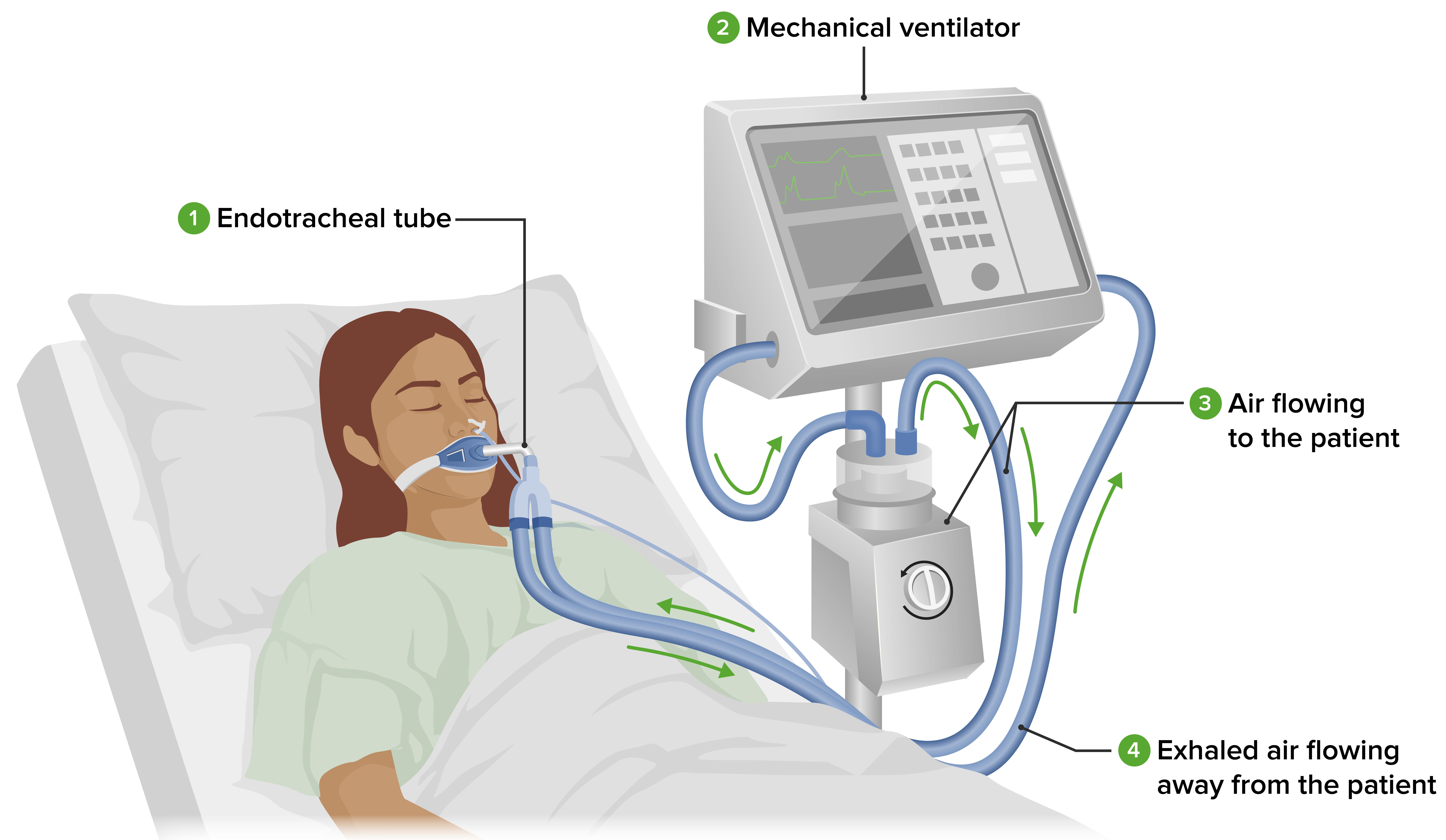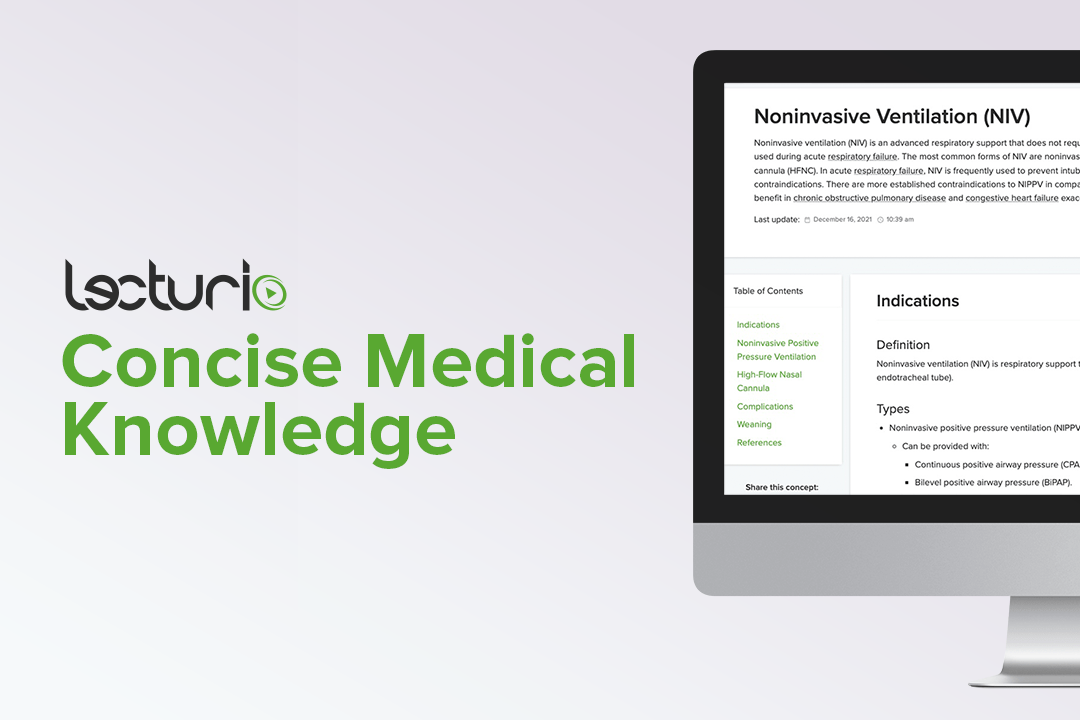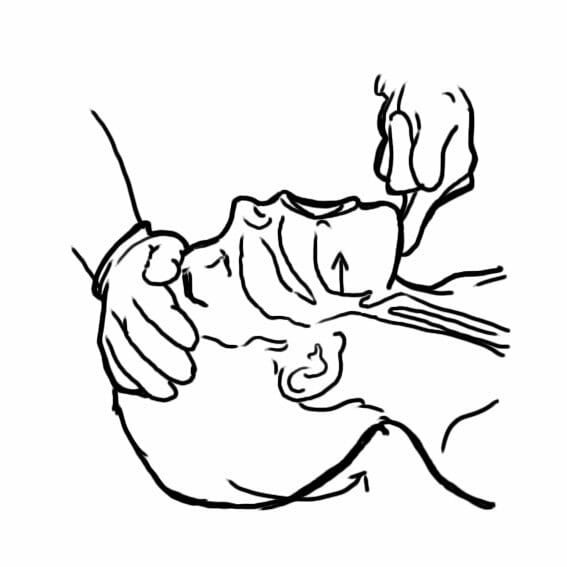Playlist
Show Playlist
Hide Playlist
Securing the Airway – General Anesthesia
-
08 -General Anesthesi.pdf
-
Download Lecture Overview
00:00 I've mentioned bag and mask ventilation a number of times in these lectures and this is what it looks like. Basically, the bag is on the anesthetic circuit, you've seen that in previous pictures. The mask is just a standard medical mask, it's placed over the patient's face to produce a seal around the nose in the mouth, the thumb and forefinger force the mask down over the face, the middle finger and other fingers lift the chin up. 00:30 And it's important to pull the chin right up. And you can see that this anesthesiologist is bagging with his or her right hand, while positioning the, positioning the patient's face and head so that it's easy to ventilate the patient. These are laryngeal mask airways. These devices are meant to sit above the glottis. So not through the end, not through the cords of the patient, not into the trachea but above the trachea. 01:00 And they hold the epiglottis up and hopefully, if they're perfectly in position, look right down through the cords into the trachea of the patient. The beauty of this device is that, even when it's not perfectly positioned, it's often usable. And you can get out of a lot of trouble using this device, even in situations where you're having great difficulty with intubation. 01:24 This is how it works. Dr. Brain, who invented this device, recommends the following technique, and I know because he was in my hospital for a number of weeks and taught myself and my colleagues how to use this. Basically, he thinks that you should deflate the cuff of the laryngeal mask, push it down while you're deflating it so it's completely flat, and then take your index finger, put it down right on, under the lip of the cuff, and pass the device into the mouth, putting firm pressure on the palate as you proceed into the back of the airway. And it's basically this motion, kind of back and then forward again. And you can push the laryngeal mask right down into the upper airway, and you can see it, the mask is in place. It's not occluding the airway, it's above the airway, and it's holding the epiglottis out of place. It's very useful. 02:18 These are standard laryngoscope blades. The blade on the right is a Macintosh blade. Most of us use the Mackintosh blade pretty much routinely. The blades on the left are the Miller blade. I can tell you I haven't used a Miller blade in probably 30 years, but there are some anesthesiologists who swear by it, and use it in preference to the Mackintosh blade. And you can see the various sizes, they go all the way down to very small, for children. And in small children, the Miller blade, the straight blade is often the preferred blade to use. These are endotracheal tubes. These come in various internal diameters. You can see that there's a cuff at the end of the tube. This is inflated with air once the tube is in place. And this acts as a seal to prevent material passing down through the trachea into the lungs, or coming the other way, up around the end of tracheal tube and it basically seals the airway, and allows ventilation to occur.
About the Lecture
The lecture Securing the Airway – General Anesthesia by Brian Warriner, MD, FRCPC is from the course Anesthesia.
Included Quiz Questions
Which laryngoscope blade is preferred in smaller children?
- Miller blade
- No. 6 blade
- Macintosh blade
- No. 5 blade
- Muller blade
At which of the following locations is the endotracheal tube cuff inflated?
- Trachea
- Glottis
- Cricoid
- Bronchus
- Vocal cords
Customer reviews
5,0 of 5 stars
| 5 Stars |
|
1 |
| 4 Stars |
|
0 |
| 3 Stars |
|
0 |
| 2 Stars |
|
0 |
| 1 Star |
|
0 |
This lecture was informative and engaging. The speaker did an excellent job of presenting the material in a clear and concise manner, making it easy to understand.







